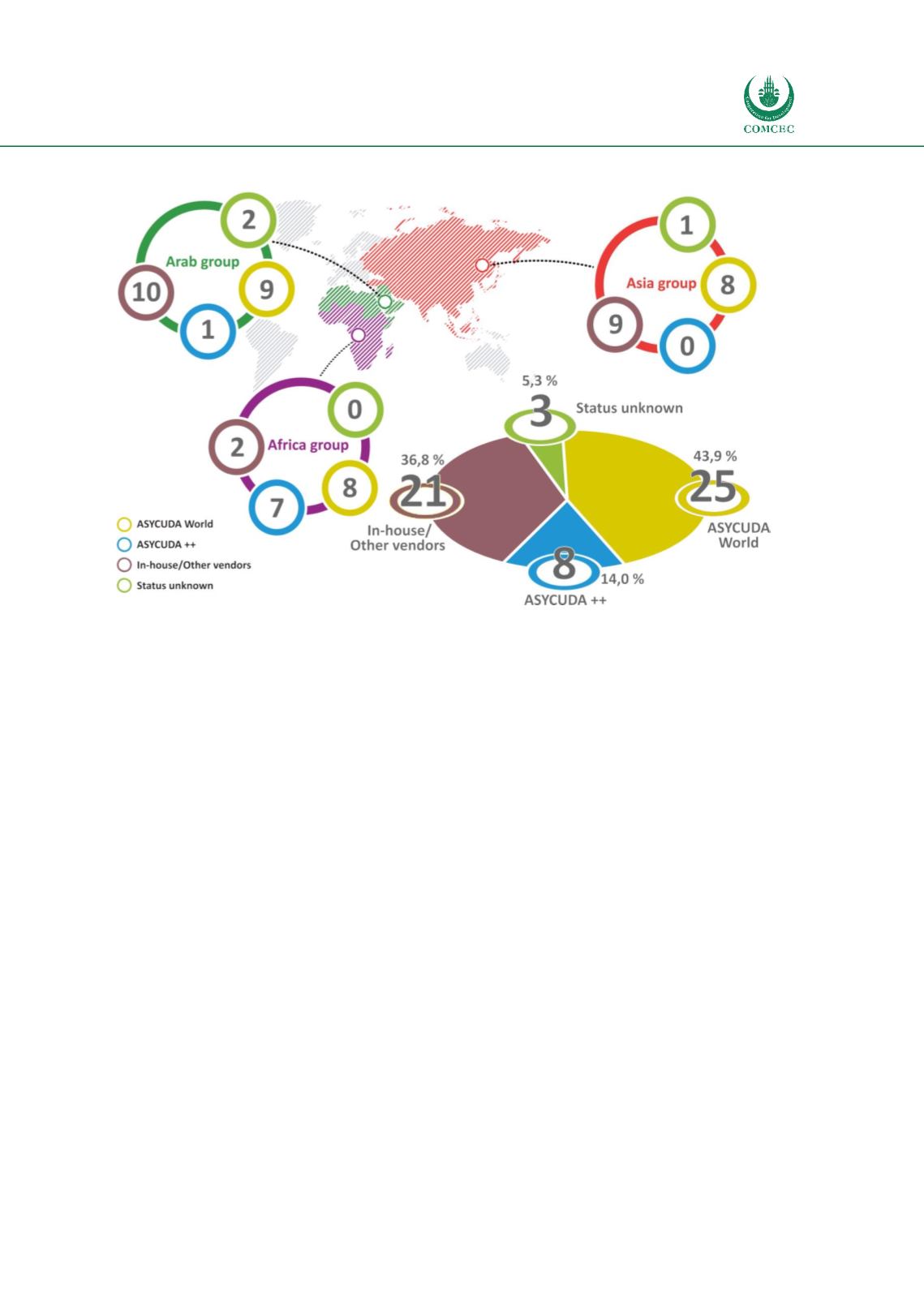

Facilitating Trade:
Improving Customs Risk Management Systems
In the OIC Member States
89
Figure 27: CDPS in the OIC Member States
Author’s compilation
As one of the factors analyzed is the geographical patterns by using the OIC MS groupings. The
level of coverage of the CRM cycle differs between the three OIC regional groupings. The Arab
Group has the most and the African Group the least CAs with CRM coverage (see Figure 28).
For the 34 OIC MS CAs that uses the ASYCUDA (ASY++ and AW), estimation of the coverage of
the CRM Cycle according to the CRM functionalities embedded in the selectivity module of
ASYCUDA. For the remaining 23 OIC MS besides the information from the Survey, we used the
information available on the Internet and our previous experience in the OIC MS (Figure 27 ).
26 OIC MS are using AW and 8 ASY++ for automation of the customs procedures. ASY++ relies
on a decentralized architecture, operational on the local level. Many countries are using different
tools to migrate the data from the local level to a “central server” that is used for reporting and
analysis services. The risk profiles must be inserted on each of ASY++ local servers manually.
The selectivity criteria on Asycuda ++, are inserted through IFTTT commands (ASY Structure
Query Language-SQL). One risk profile can have more risk indicators, such as country of origin,
tariff code, company, registration plate number, etc. To ensure adequate risk analysis efficiency,
the criteria set in ASY ++ must provide one selectivity criterion for each risk indicator and
mathematical and logical operators cannot be used to combine two or more risk indicators in
one selectivity criteria.
AW is web-based CDPS, relying on a centralized IT architecture. The inserting of risk profile
selectivity criteria and indicators is centralized and complex mathematical and logical operators
(AND, OR, XOR, NOT, LIKE, etc.) can be used.
















